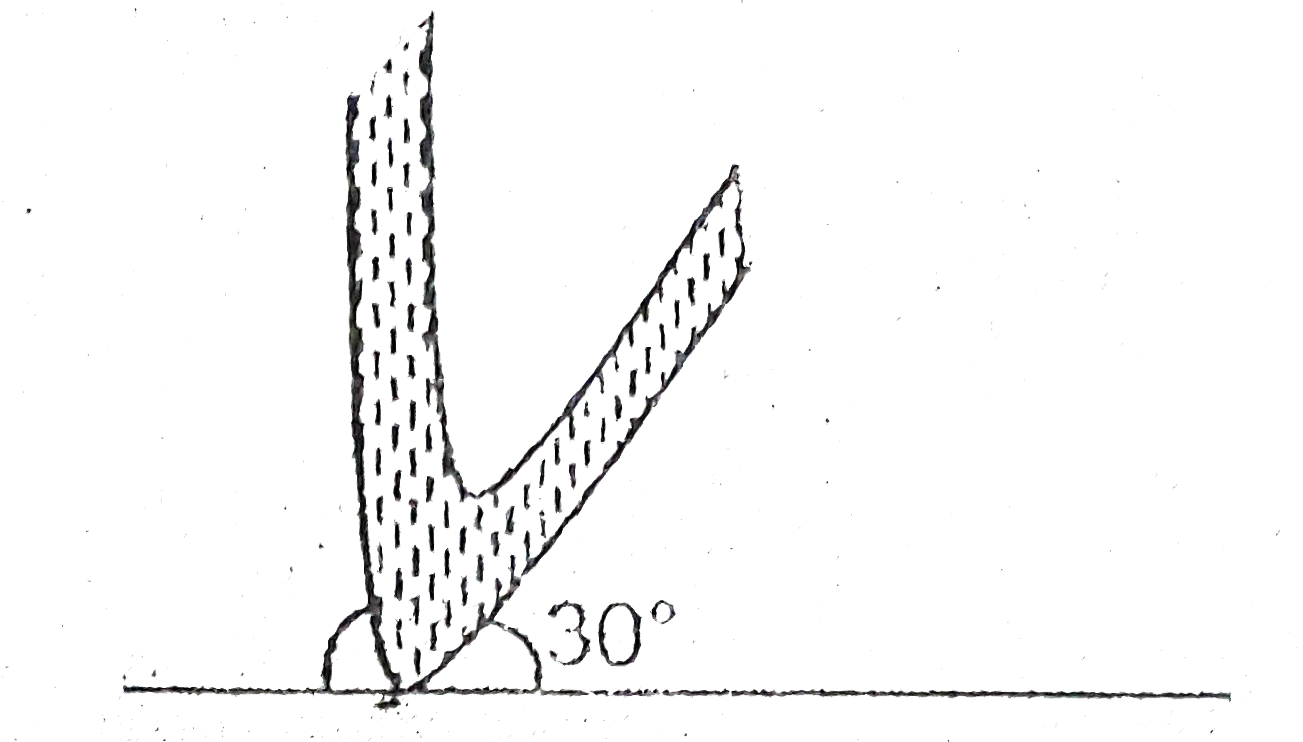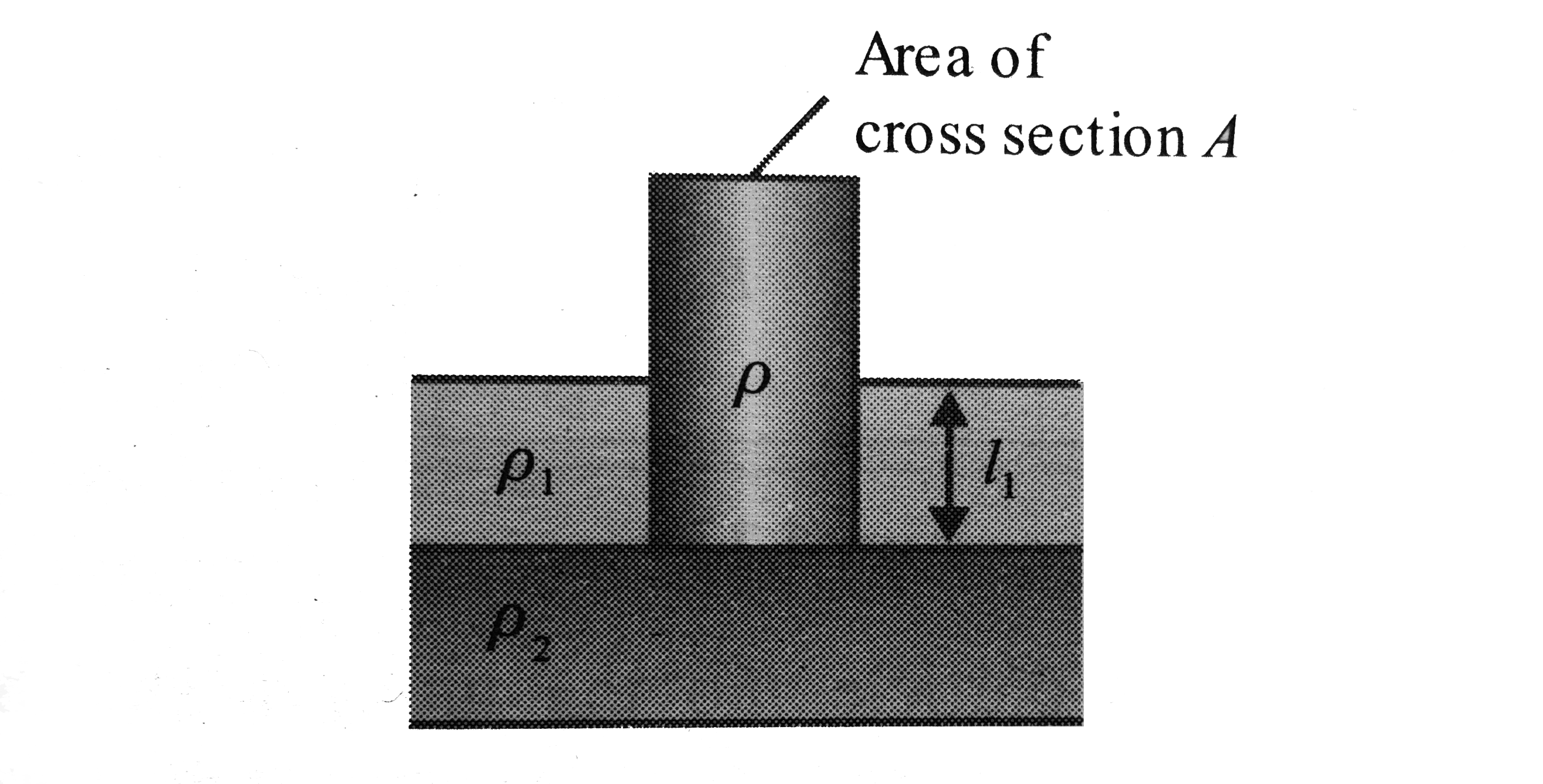A liquid of mss m is set into oscillations in a U-tube of cross section A. Its time period recorded is T, where T=2π√l/2g , here l is the length of liquid column. If the liquid of same mass is set into oscillations in U-tube of cross-section A/16 then determine time period of oscillation.
To solve the problem, we need to determine the new time period of oscillation when the cross-section area of the U-tube is changed from A to A/16. We will start with the formula for the time period of oscillation given in the question and analyze how the change in cross-section affects it.
1. Understand the Original Time Period:
The original time period T is given by the formula:
T=2π√l2g
where l is the length of the liquid column and g is the acceleration due to gravity.
2. Identify the Effect of Cross-Section Change:
When the cross-section area of the U-tube is changed from A to A16, we need to understand how this affects the time period. The time period T is related to the cross-sectional area A as follows:
T∝√1A
This means that if the area decreases, the time period increases.
3. Calculate the New Cross-Section Area:
The new cross-sectional area is:
A′=A16
4. Determine the New Time Period:
Since the time period is inversely proportional to the square root of the cross-sectional area, we can express the new time period T′ as:
T′=T⋅√AA′
Substituting A′=A16:
T′=T⋅
⎷AA16=T⋅√16=4T
5. Substitute the Original Time Period:
Now substitute the original time period T=2π√l2g into the equation for T′:
T′=4⋅2π√l2g=8π√l2g
Final Answer:
The new time period of oscillation when the cross-section area is reduced to A16 is:
T′=8π√l2g
The original time period T is given by the formula:
T=2π√l2g
where l is the length of the liquid column and g is the acceleration due to gravity.
When the cross-section area of the U-tube is changed from A to A16, we need to understand how this affects the time period. The time period T is related to the cross-sectional area A as follows:
T∝√1A
This means that if the area decreases, the time period increases.
The new cross-sectional area is:
A′=A16
Since the time period is inversely proportional to the square root of the cross-sectional area, we can express the new time period T′ as:
T′=T⋅√AA′
Substituting A′=A16:
T′=T⋅
⎷AA16=T⋅√16=4T
Now substitute the original time period T=2π√l2g into the equation for T′:
T′=4⋅2π√l2g=8π√l2g
The new time period of oscillation when the cross-section area is reduced to A16 is:
T′=8π√l2g
Similar Questions
Find time period of liquid column of length l in the shown tube.
 View Solution
View SolutionA uniform rod of length 2.0 m is suspended through an end and is set into oscillation with small amplitude under gravity. The time period of oscillation is approximately
View SolutionA spring elongated by length 'L' when a mass 'M' is suspended to it. Now a tiny mass 'm' is attached and then released, its time period of oscillation is -
View SolutionA pole is floating in a liquid with 80 cm of its length immersed. It is pushed doun a certain distance and then released. Time period of vertical oscillation is
View SolutionWhat is the period of oscillation of a liquid contained in a U - tube executing shm ?
View SolutionA particle of mass (m) is executing oscillations about the origin on the (x) axis. Its potential energy is V(x)=k|x|3 where (k) is a positive constant. If the amplitude of oscillation is a, then its time period (T) is.
View SolutionA particle of mass (m) is executing oscillations about the origin on the (x) axis. Its potential energy is V(x)=k|x|3 where (k) is a positive constant. If the amplitude of oscillation is a, then its time period (T) is.
View SolutionAn object of mass m is suspended at the end of a massless wire of length L and area of cross -section A. Young modulus of the material of the wire is Y. If the mass is pulled down slightly its frequency of oscillation along the vertical direction is :
View SolutionA test tube of length l and area of cross-section A has some iron fillings of mass M. The test tube floats normally in a liquid of density ρ with length x dipped in the liquid. A disturbing force makes the tube oscillate in the liquid. The time period of oscillation is given by (neglect the mass of the test tube)
View SolutionA vertical pole of length l , density ρ , area of cross section A floats in two immiscible liquids of densities ρ1and ρ2. In equuilibrium possition the bottom end is at the interface of the liquids. When the cylinder is displaced vertically, find the time period of oscillation.
 View Solution
View Solution

